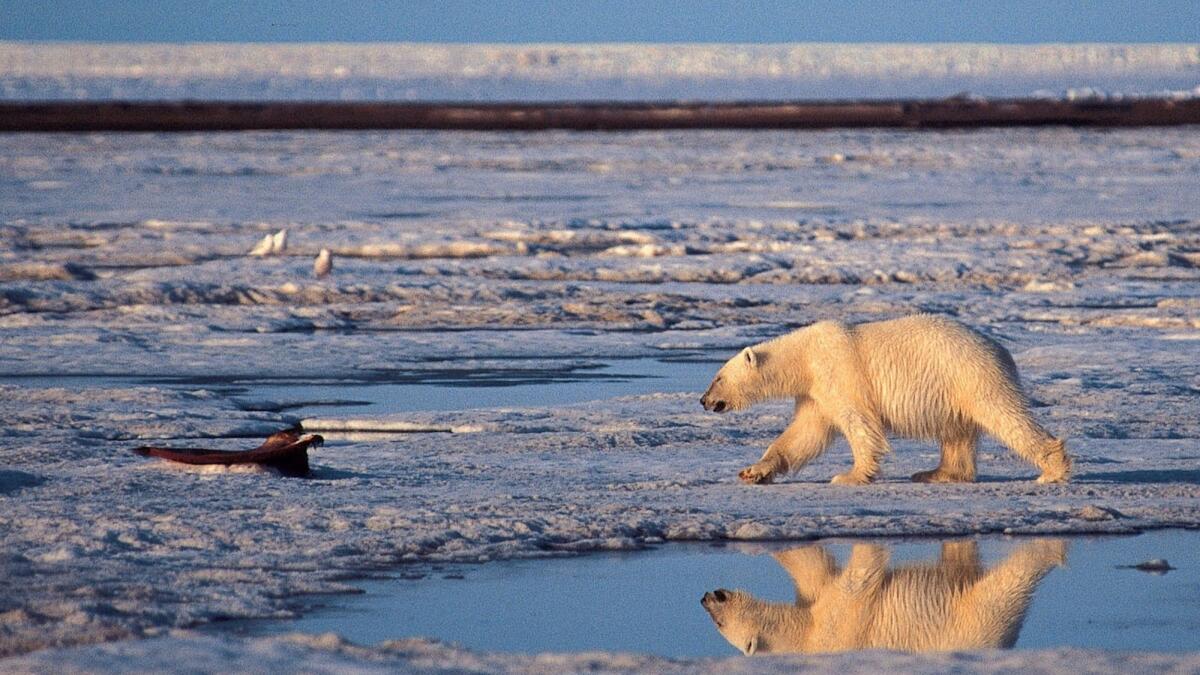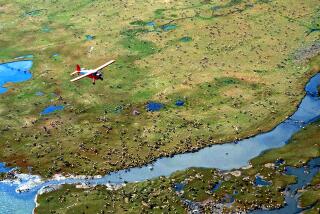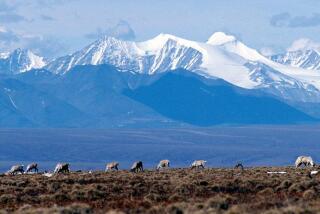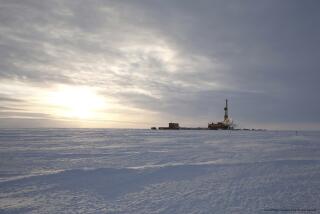Trump administration moves closer to oil drilling in Alaska’s Arctic National Wildlife Refuge

Reporting from Washington — The Trump administration took another step toward allowing oil and gas drilling in the Arctic National Wildlife Refuge by issuing a draft environmental impact statement that would outline four development alternatives, one of which would set some modest limits to protect caribou that use the area as a crucial summer calving ground.
Environmental groups roundly criticized the report, which they said had been rushed in an effort to get exploration started during President Trump’s first term.
The Interior Department’s Bureau of Land Management said Thursday that it still intends to hold an oil and gas lease sale in 2019 that would open up exploration of the refuge’s coastal plain on approximately 1.6 million acres of the 19.3-million-acre Arctic Refuge.
The first lease sale would offer no fewer than 400,000 acres of “high-potential” land for bids, the bureau said.
The refuge — home to polar bears, wolves, migratory birds and Porcupine caribou — has long been closed to oil and gas exploration despite great interest in the petroleum industry. Climate change has made the area more delicate as melting ice has driven polar bears to spend more time in dens along the refuge’s coastal plain.
However, a controversial provision in the Tax Cuts and Jobs Act of 2017 provided for opening up the reserve’s coastal plain to drilling and ordered the administration to hold at least two lease sales within seven years.
“An energy-dominant America starts with an energy-dominant Alaska,” outgoing Interior Secretary Ryan Zinke said in a statement.
One of the four development alternatives in the 392-page draft would protect the caribou’s summer habitat by putting aside 708,600 acres while still allowing oil and gas leases on more than 1 million acres, the draft said. Some of the alternative sets of regulations would limit some summer activity to avoid disturbing calving caribou season.
The Bureau of Land Management said it would hold public meetings in Washington and the Alaskan cities of Anchorage, Arctic Village, Fairbanks, Kaktovik, Fort Yukon, Venetie and Utqiaġvik. It set a 45-day comment period ending Feb. 11. A final environmental statemenmt would follow, then a lease sale.
Environmental groups are unhappy with the process.
“There’s no precedent for anything done this quickly for an environmental review of this scale,” said Adam Kolton, executive director of the Alaska Wilderness League. He said that “this is really a rubber-stamp exercise rather than an effort to mitigate the impact to wildlife on the coastal plain.”
He said that the location of the public hearings — all but one in Alaska — was unfair to people living elsewhere in the U.S. “These are public lands that belong to all Americans,” he said, adding that polls show widespread opposition to drilling in the refuge.
The Wilderness Society issued a report saying that the administration’s estimates of oil in the refuge “was based on outdated information and overly optimistic assumptions about how much oil exists in the region, the price of such oil and the speed with which it could be developed and taken to market.”
The society’s report notes that the December 2017 sale on the National Petroleum Reserve-Alaska attracted bids on less than 1% of the 10.3 million acres offered.
A source familiar with Alaska lease sales but who spoke on the condition of anonymity said that for now, oil companies weighing bids include Exxon Mobil, Chevron, BP, ConocoPhillips, ASRC, Oil Search, Armstrong and Repsol.
More to Read
Sign up for Essential California
The most important California stories and recommendations in your inbox every morning.
You may occasionally receive promotional content from the Los Angeles Times.










